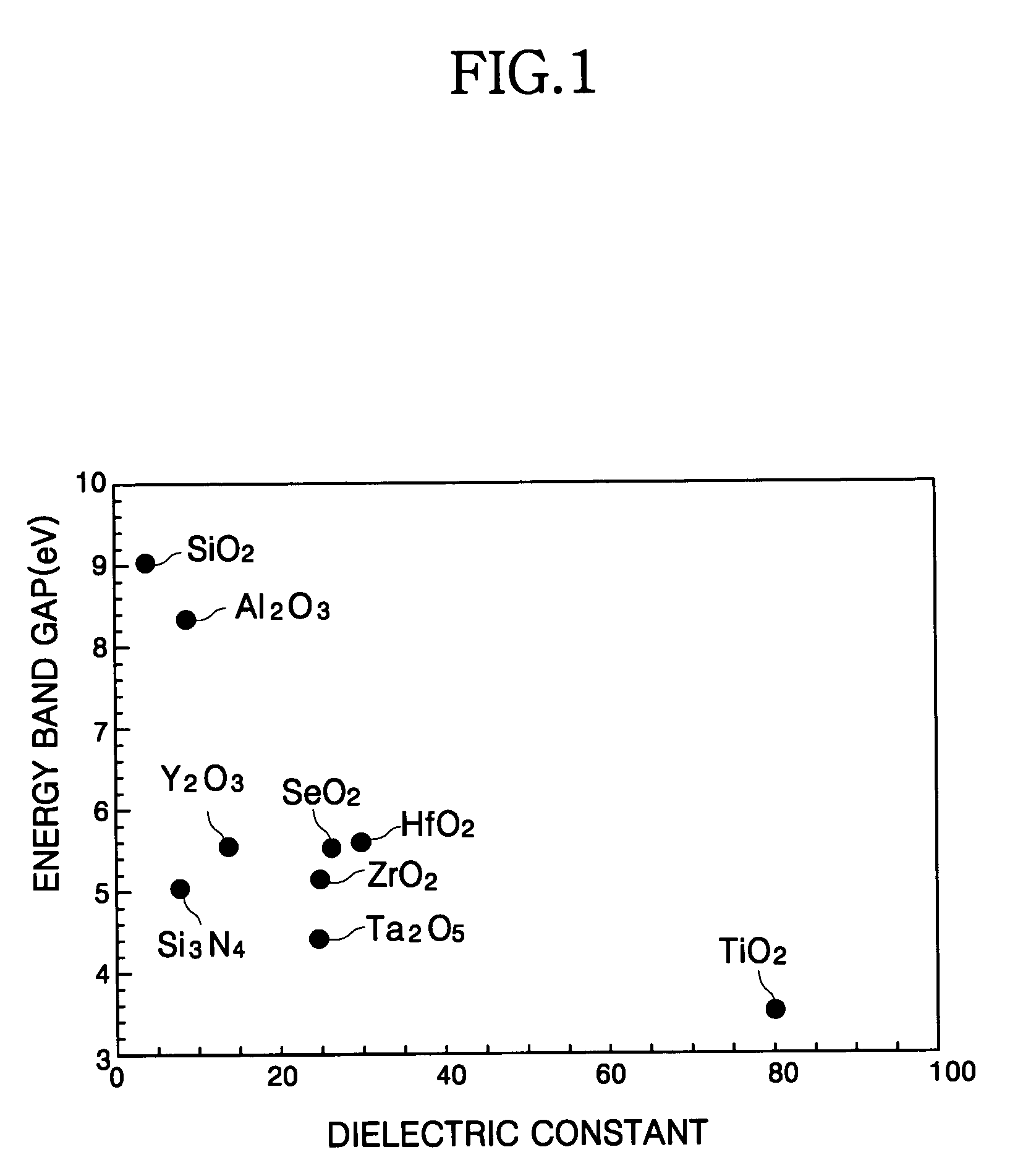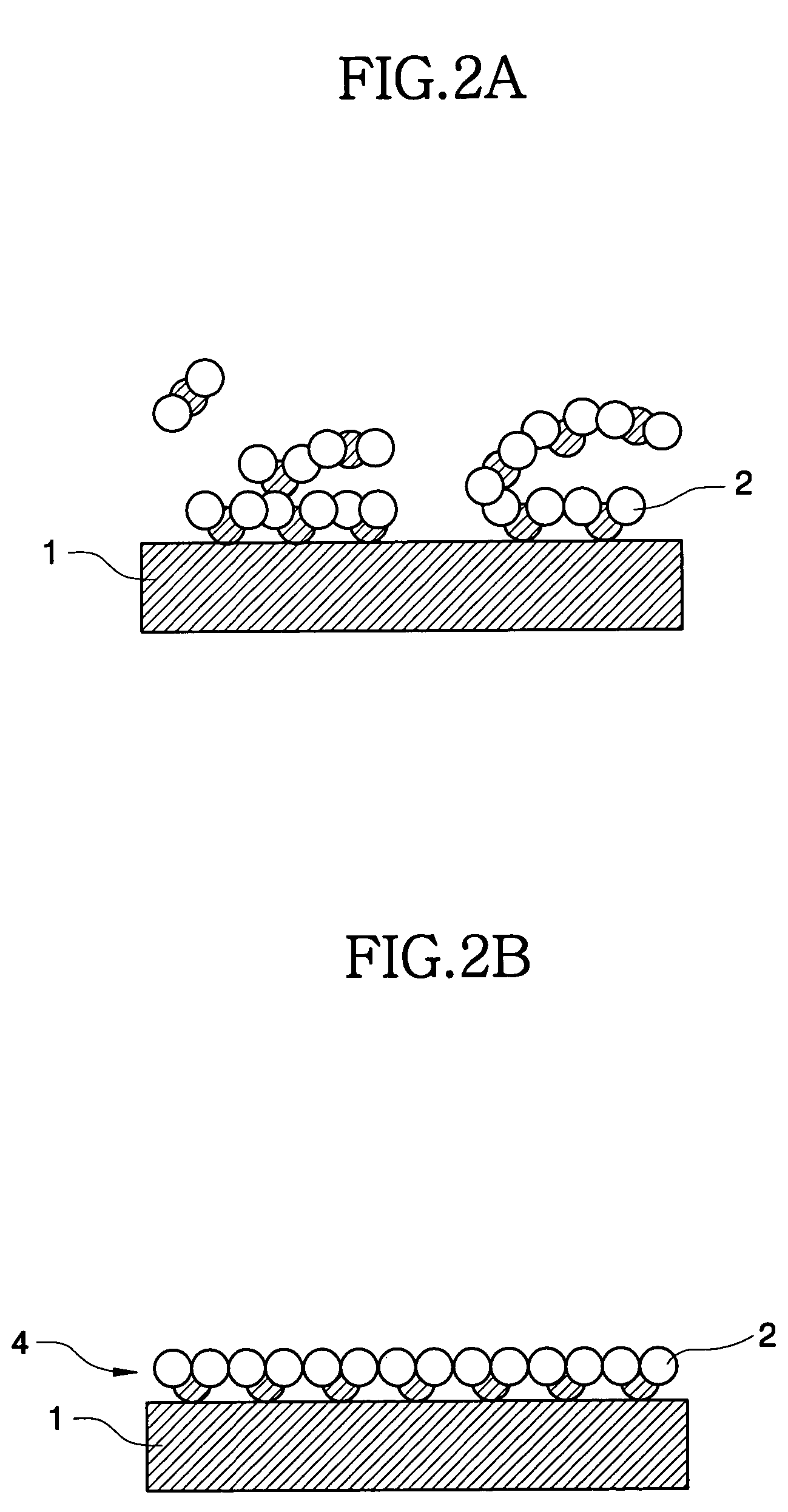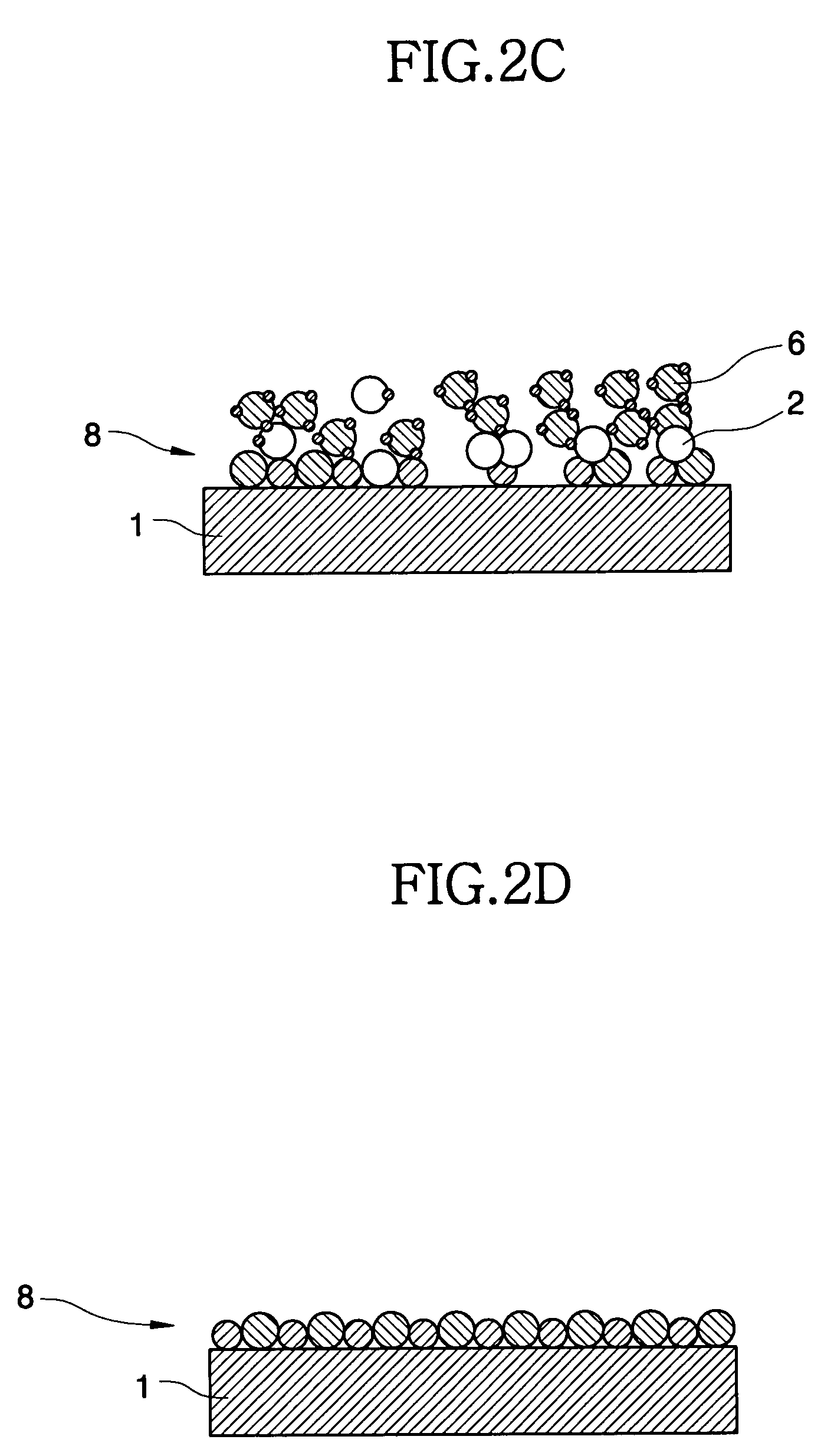Method of forming oxide layer using atomic layer deposition method and method of forming capacitor of semiconductor device using the same
a technology of atomic layer and forming method, which is applied in the direction of coating, transistor, chemical vapor deposition coating, etc., can solve the problems of reducing threshold voltage, increasing gate leakage current, and affecting so as to improve the stability and reliability of the resulting semiconductor device, improve the deposition characteristics, and improve the step coverage
- Summary
- Abstract
- Description
- Claims
- Application Information
AI Technical Summary
Benefits of technology
Problems solved by technology
Method used
Image
Examples
Embodiment Construction
[0043]Hereinafter, exemplary embodiments of the present invention will be described in detail.
[0044]FIGS. 2A to 2E are cross-sectional views for explaining an exemplary embodiment of forming an oxide layer using an atomic layer deposition method. As illustrated in FIG. 2A, a substrate 1, such as a silicon wafer, is placed in a chamber in which a temperature of from about 100° C. to about 500° C. is maintained. The pressure of the chamber is controlled to about 0.4 Torr or less. In an exemplary embodiment, the temperature range is from about 150° C. to about 350° C. A precursor containing one central metal or semimetal element and an amino functional group is introduced into the chamber using an inert carrier gas such as argon (Ar) or nitrogen (N2) at a flow rate of about 50–5000 sccm for about 1–3 seconds to form an absorption layer 2 on the substrate. In an exemplary embodiment, the flow rate of the inert gas is in a range of about 500–1500 sccm.
[0045]The precursor includes a compo...
PUM
| Property | Measurement | Unit |
|---|---|---|
| pressure | aaaaa | aaaaa |
| temperature | aaaaa | aaaaa |
| dielectric constant | aaaaa | aaaaa |
Abstract
Description
Claims
Application Information
 Login to View More
Login to View More - R&D
- Intellectual Property
- Life Sciences
- Materials
- Tech Scout
- Unparalleled Data Quality
- Higher Quality Content
- 60% Fewer Hallucinations
Browse by: Latest US Patents, China's latest patents, Technical Efficacy Thesaurus, Application Domain, Technology Topic, Popular Technical Reports.
© 2025 PatSnap. All rights reserved.Legal|Privacy policy|Modern Slavery Act Transparency Statement|Sitemap|About US| Contact US: help@patsnap.com



